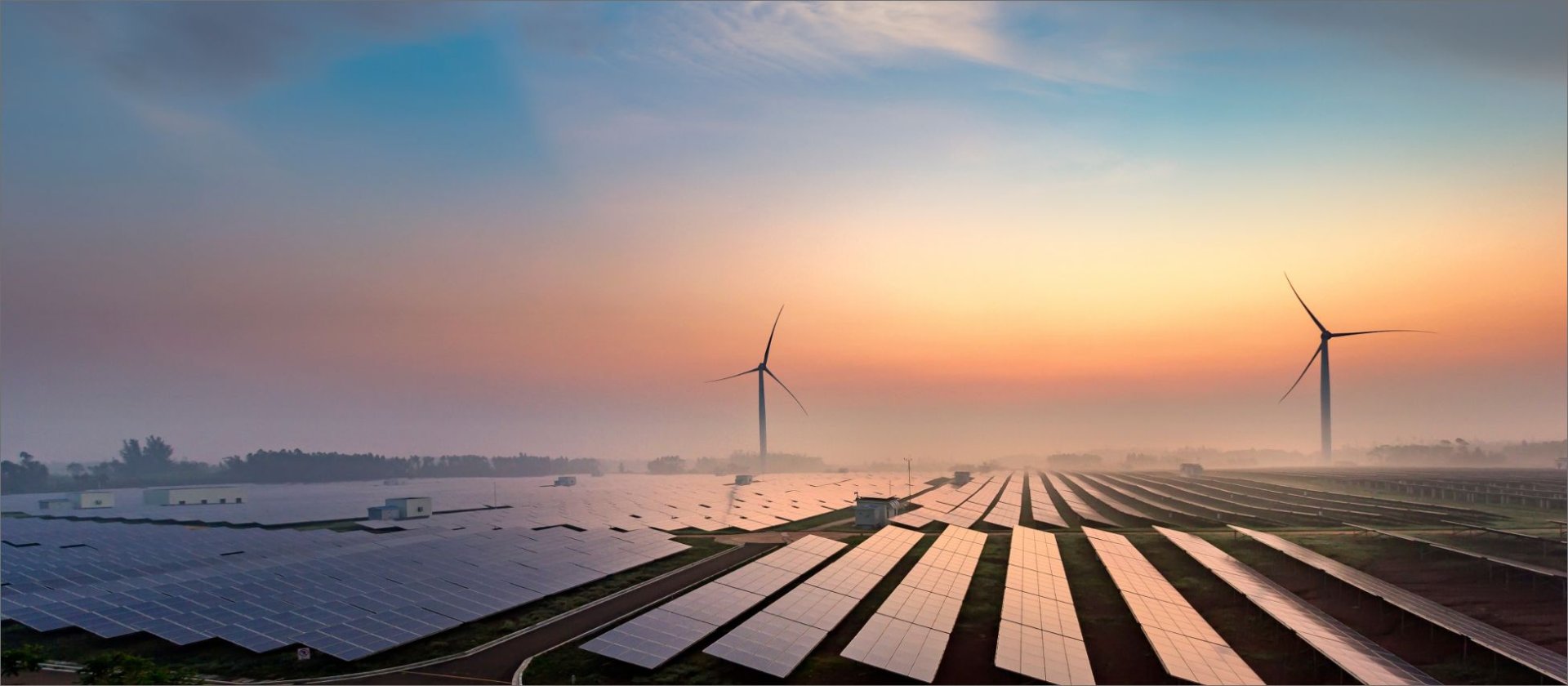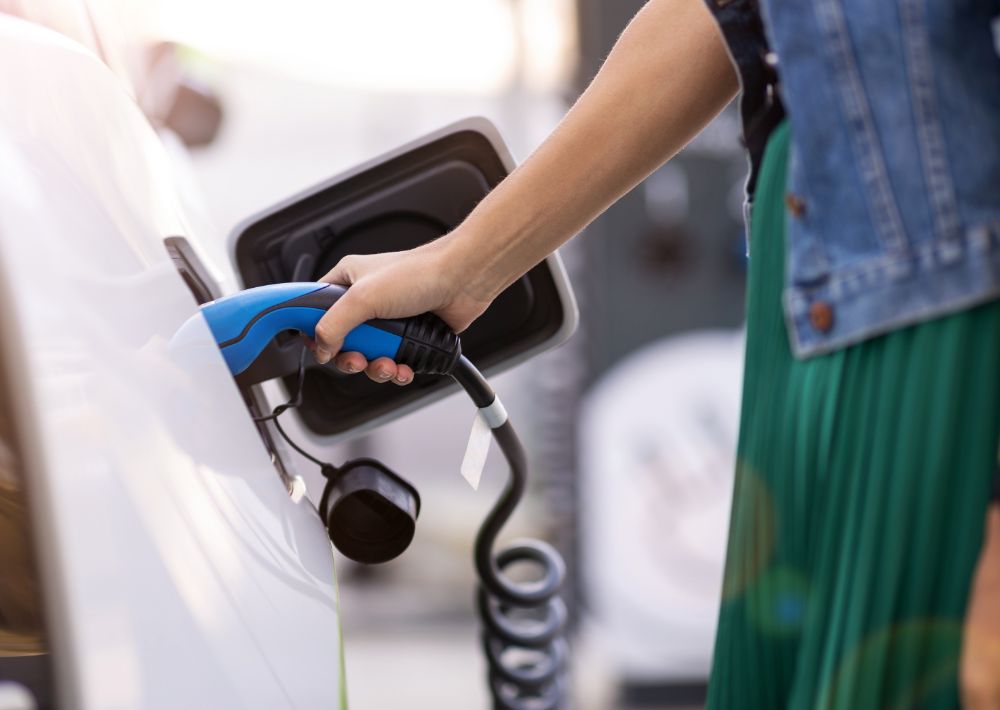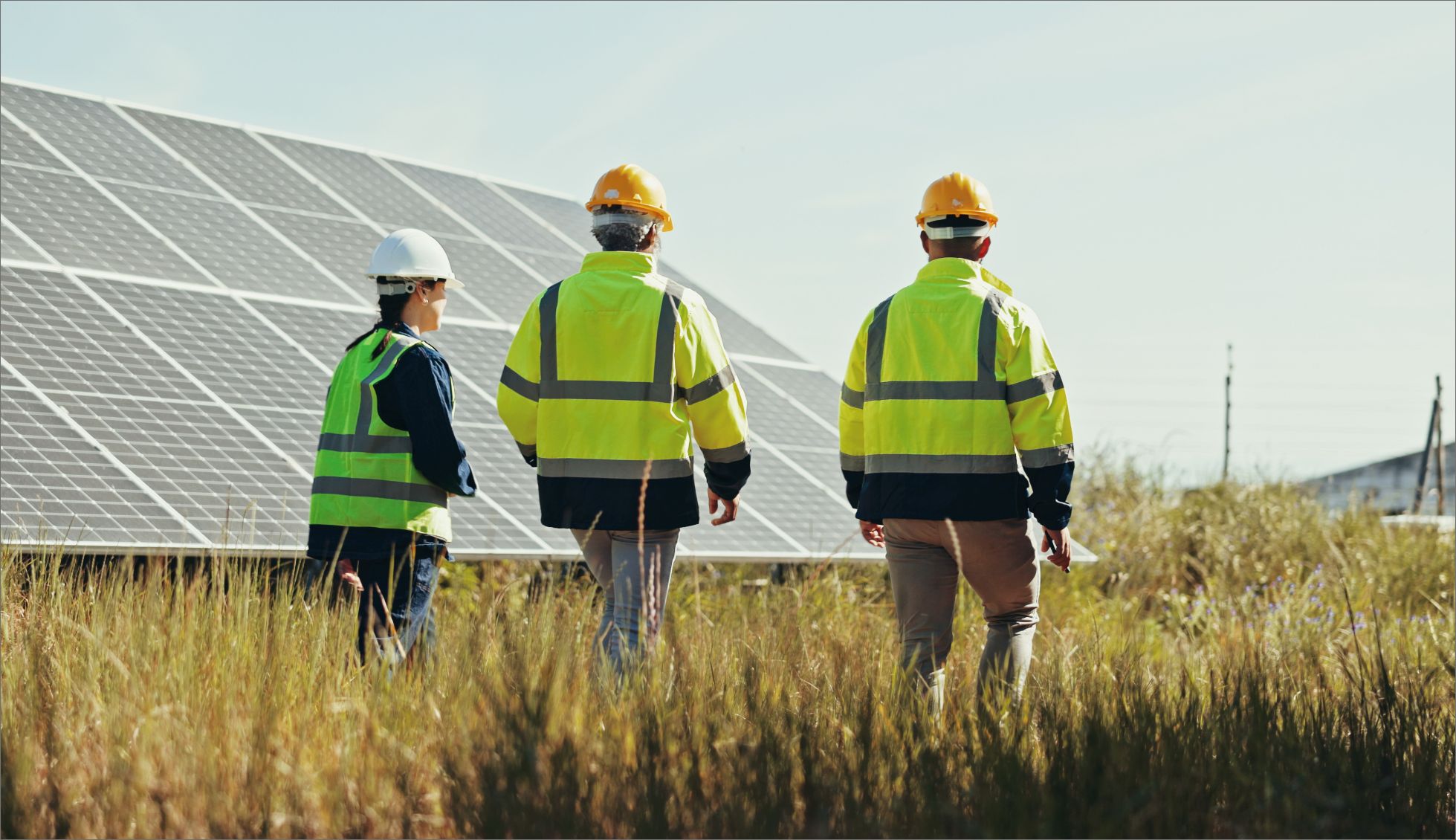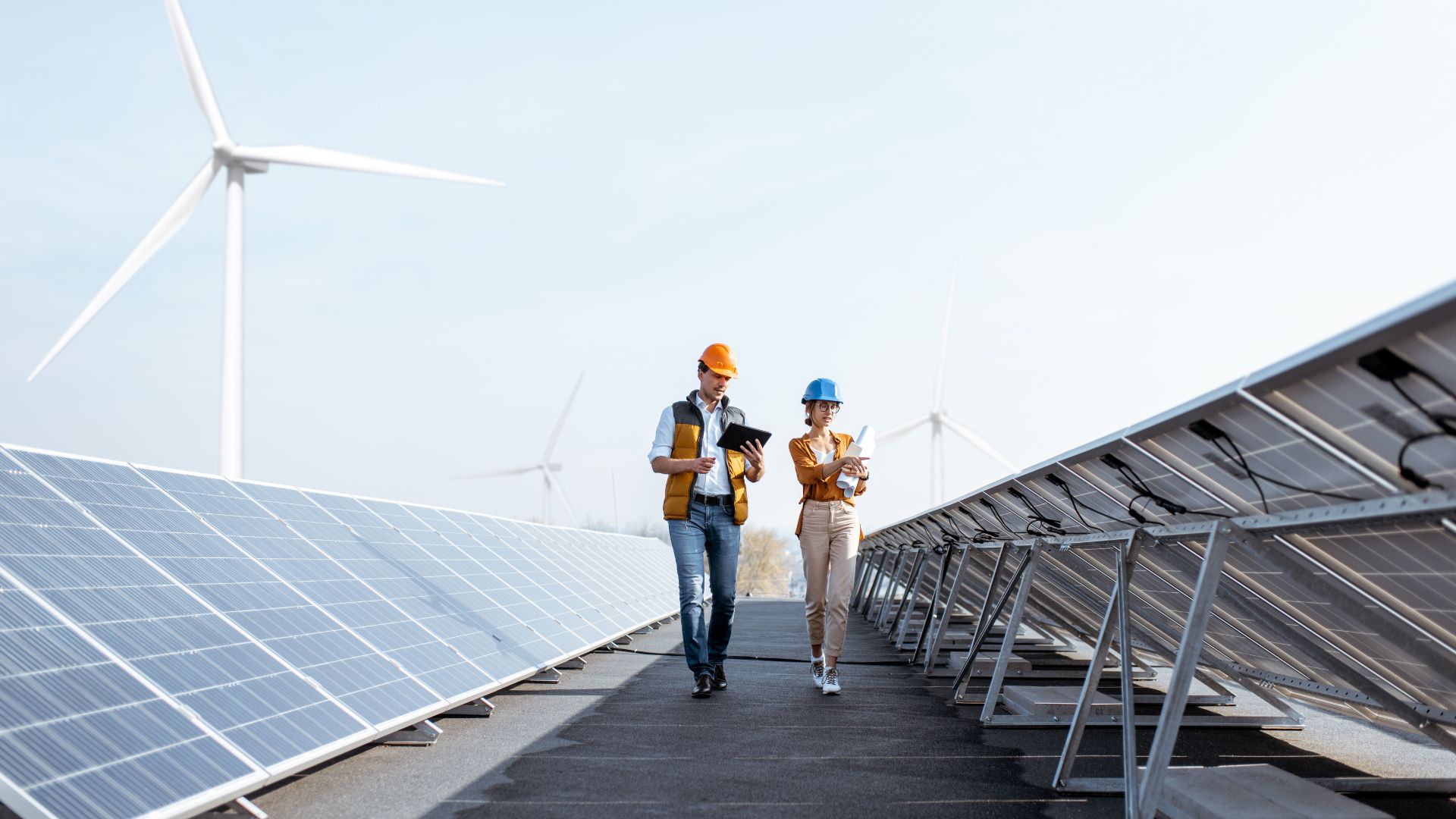Actions and resources in relation to climate change policies (E1‑3)
- ESRS:
-
Actions and resources in relation to climate change policies E1-3Actions and resources in relation to climate change policies
-
Actions and resources in relation to material sustainability mattersMDR-AActions and resources in relation to material sustainability matters
Key actions we are taking to implement climate policies
The key measures we are taking to implement our climate policy relate to our own operations and the downstream part of our value chain.
The downstream activities are carried out for clients, for the loan portfolio and investment funds and are mainly related to our Sustainable Finance and Investment Classification System (SFICS) and to counteracting greenwashing.

The expected outcomes of the measures described below are expressed in the strategic objectives defined by the Bank for climate issues in the area of climate policy – these objectives and the associated time horizons are presented in subchapter E1-4.
Own operations
The internal measures we undertake within the framework of the "Responsible Banking and Sustainability Policy" are:

-
promoting environmental protection in accordance with international regulatory standards and a system of continuous improvement – in 2024, the Bank received ISO14001 certification, which confirmed that the environmental management system for the Bank's head office buildings meets the requirements of the standard. Santander Leasing is also ISO 14001 certified,
-
measuring and monitoring natural resource consumption, emissions and waste production in most of the Bank's facilities.
Currently we do not implement activities that qualify as nature-based solutions. Due to the nature of our business, the implementation of planned climate change mitigation and adaptation activities is not dependent on the availability or allocation of resources. These activities are an internal part of our strategy and determined primarily by regulatory requirements and market demand.
In the Group companies, we are taking measures to mitigate the Group’s negative impact on the climate. We are identifying sources of greenhouse gas emissions and changing our vehicles to low-emission ones. We are increasing the efficiency of energy consumption. In 2024, 100% of electricity purchased directly by the Bank came from RES, for the remaining volume of electricity used by the Bank we have obtained guarantees of energy origin.

Percentage consumption of electricity from RES in Group’s subsidiaries
* order of companies based on energy consumption – from highest to lowest. Since Santander Factoring subleases space from Santander Bank Polska, the company’s electricity consumption is counted as the Bank’s consumption.
The Bank has also started producing its own energy from photovoltaics (in 2024 we produced 32 MWh – the total consumption of the Group is 23,609 MWh), we are continuing to replace lighting with LED and we are testing solutions to reduce the consumption of thermal energy in branches. Educational activities are also being carried out to raise climate awareness among employees.
Credit portfolio
Actions taken towards external stakeholders are:
- limiting financing for activities that may have a direct negative impact on the environment and society and cause long-term effects related to
climate change, - engaging in dialogue with customers to encourage them to change their business practices to more sustainable ones,
- supporting the transformation of clients in the above-mentioned area through funding,
- encouraging suppliers to adopt environmental commitments and to move towards a low-carbon economy.
In the Group, we have carried out a decarbonisation leverage analysis. Based on the analysis of transition risk for our clients (presented in section E1.SBM3) and market trends, we highlighted four sectors that could prove to be such levers in our loan portfolio:
- real estate (both commercial and residential),
- industry – while we see potential for decarbonisation measures here, given the complexity of this sector and the lack of reliable data, further analysis is required. In addition, this sector is heavily dependent on the national energy mix,
- energy sector – funding renewable energy sources (RES),
- transport – leasing electric cars, financing low-emission public transport.
The barriers to leveraging these opportunities include, in our view, the low level of public support for the transition, technological challenges (in many cases, a lack of competitive low- or zero-carbon alternatives), and logistical barriers (e.g., insufficient charging infrastructure for electric vehicles).
In 2024, the effective fund distribution occurred in two programmes – support for electromobility and decarbonisation of residential buildings. However, a broad distribution of funds from the National Recovery Plan programmes was not launched. There is also a lack of a comprehensive approach to reducing the main existing sources of emissions. In the mortgage portfolio, a significant challenge relates to the low coverage of the real estate market by energy performance certificates, energy prices are regulated (which reduces the economic motivation for thermo-modernisation from the users’ perspective) and the substantial part of the carbon footprint is related to emissions generated by systemic heating and electricity generation. An additional difficulty, from the customers’ perspective, is the change in the billing system for RES systems.
Regardless of the above-mentioned barriers, in 2024 we acted on the above-mentioned decarbonisation levers and saw an increase in green financing, in line with the internal classification system (data in ‘Measures and targets’ chapter). It was influenced mainly by the financing of RES, energy efficiency and low-carbon transport (i.a. as a part of ’My Electric Car’ programme). The last two areas are a significant component of our clients’ cost base, crucial in the face of high inflation and strong competition.

Our focus is on education activities that address needs of customers in the investment decision-making process. These efforts aim to help clients understand the economic benefits of transitioning to a more sustainable business model. The green financing initiatives in the retail and corporate customer segment focused on:
'Santander New Energy’ platform
Commercialising a 'Santander New Energy’ platform targeting SME and corporate segment customers. It allows to estimate the carbon footprint and calculate the cost-effectiveness of investments to support the decarbonisation of the main asset classes responsible for generating it in scope 1 and 2, including using public support schemes (assuming their expansion in scope/scale and bankability in the future).
Training programme to equip advisors and bankers
Delivering a commercial training programme to equip advisors and bankers with the knowledge to have practical discussions with clients on the quantifiable benefits of investing in energy efficient assets and/or upgrading assets to improve operational efficiency and reduce business costs.
Educational activities for clients
Educational activities for clients. These included a series of podcasts called ‘Z nową energią o finansach’ (With new energy about finance) and a cycle of nationwide customer meetings focused on demonstrating the business benefits of using the technology in retrofitting corporate assets to reduce emissions, and outlining the future regulatory pressures associated with sustainability that could translate into increased costs of doing business across industries.

In 2024, the Bank offered products to support the economy transition (below). In 2025, the Bank plans to continue and expand these activities, with the exact direction of these activities depending on the launch of a public support programme calibrated to the actual needs of customers.
Transformation Loan for sustainable investments (Business New Energy)
- segment: SMEs
- financing objectives: photovoltaic panels, electric cars, energy storage, EV charging stations, heat pumps.
Environmental Credit with BGK (loan partially repaid with a subsidy in the form of an ecological bonus paid by Bank Gospodarstwa Krajowego from the European Funds for a Modern Economy 2021-2027 Programme):
- segment: SMEs, Small-midcaps
- Financing objectives: the loan is intended to finance expenditure related to the modernisation of infrastructure – to make the company more energy efficient.
Ekomax Loan
- investment loan with BGK guarantee and loan capitalization refund. Intended to finance a modernisation investment, including obligatorily a thermo-modernisation element (unless otherwise indicated by the thermo-modernisation audit) and additionally, among other things, investments related to renewable energy sources, circular economy and construction and replacement of heating systems.
In the Corporate and Investment Banking segment, which includes the largest companies, the Bank supports the country’s energy transition by providing financing for the construction of wind farms and photovoltaic installations. The total renewable energy sources (RES) portfolio value at the end of the year amounted to approximately PLN 7.8 billion, of which at least one-third represents project financing. The total capacity of the RES projects we financed in 2024 is 170 MW.

Although financing renewable energy sources is a cornerstone of the energy transition, it is not the only crucial element of this complex process. In addition to direct project finance and green bond issuance, we support our clients through advisory services. We provide guidance in areas such as the purchase and sale of green assets, structuring sustainability-linked loans (SLL), and developing energy transition plans. In 2024, we granted five SLL financings for clients operating in the retail, information technology, transportation and logistics sectors.
For clients operating in high-emission sectors, such as energy, fossil fuels, and aviation, we conduct detailed analyses of greenhouse gas emissions, decarbonization targets, and energy transition plans. Since these sectors are particularly sensitive to climate change, we help our clients understand the opportunities and risks associated with the transition.

We also regularly meet with clients from other sectors. Among other topics, we discuss sustainability-linked financing options, which often include commitments to reduce greenhouse gas emissions. We also address current regulatory requirements, investor expectations, and best market practices.
Environmental considerations, as part of ESG factors, are also integrated into our investment analysis. Within our Group, we see the inclusion of nonfinancial factors as an opportunity to gain a more comprehensive view of the assets we manage and to make more balanced investment decisions. Our analysis includes aspects such as environmental strategy and management, climate change impact, resource utilization, and pollution prevention.
Funds compliant with SFDR
Santander TFI offers investment funds classified as Article 8 of the SFDR (so-called light green) and Article 9 of the SFDR (so-called dark green) products.
As at 31 December 2024, Santander TFI managed 6 such funds:
- 5 sub-funds – classified as Article 8 products under SFDR ( light green): Santander Prestiż Global Responsible Investment, Santander Prestiż European Equity, Santander Prestiż Future Wealth and Santander Prestiż Technology and Innovation which are sub-funds of the Santander Prestiż SFIO fund and Santander Equity Growth, sub-fund of the Santander FIO fund.
- 1 sub-fund – classified as an Article 9 SFDR product (so-called dark green): Santander Prestiż Prosperity a sub-fund of the Santander Prestiż SFIO fund.
As of 31 December 2024, the share of ESG funds’ net assets in the total net assets of investment funds managed by TFIs was 4.4%.
Internal regulations for sustainable finance
Actions described above are in line with the internal classification system and the product commercialisation process. Environmental and climate issues are taken into account in the development of products and services, as well as in credit analysis.
Sustainable Finance and Investment Classification System (SFICS)
Since 2022, we have had an internal methodology within the Santander Bank Polska Group for classifying sustainable financial and investment products and services, in particular describing how we define green, social and sustainable financing. The system applies to financial products, investments and services, among others, and is common to the entire Banco Santander Group. The document is periodically updated to reflect regulatory changes and market practices. The last update in 2024 mainly concerned the inclusion of some of the technical criteria of the EU Taxonomy (with regard to the criteria of material contribution to the environmental goals of the EU Taxonomy). However, it should be noted that SFICS is not identical to the EU Taxonomy. In particular, it does not assume full verification of the ‘do no significant harm’ (DNSH) and minimum social safeguards (MSS) criteria.

In general, the classification system distinguishes between two types of financing: use-of-proceeds transactions and sustainability-linked transactions. Instruments, products and financial services with a dedicated purpose are those for which it can be guaranteed that 100% or a certain part of the funds from the transaction will be allocated to activities or projects that comply with the guidelines mentioned in the regulation. In order to be categorised as compliant, the financing must relate to a specific sector or economic activity and meet the definitions and technical eligibility criteria specified for them in the SFICS. The SFICS is based on internationally recognised guidelines and industry principles, such as the ICMA Social and Green Bond Principles, Climate Bond Standards and the aforementioned EU Taxonomy.
It defines the scope, criteria, applicable due diligence requirements in the environmental and social fields and the approach to their verification. It serves as a reference point for the creation of sustainable financial products and services.
Tackling greenwashing
To mitigate the risk of greenwashing, we have established an ESG Panel. The task of this working group is to support the Group’s business segments in correctly identifying and classifying sustainable credit transactions and products, both in terms of compliance with the criteria of the internal Sustainable Finance and Investment Classification System (SFICS) as well as the EU Taxonomy. The Panel is chaired by the Head of ESG Risks (Risk Management Division) and overseen by the Risk Control Committee at the Bank Management Board level.
Regulations relating to the implementation of new products and services ensure that consultation with the Compliance Department and the Sustainability and ESG Team is required for all ESG-related products and services, including non-credit ones.

With regard to greenwashing risk, further policies, procedures and guidelines are gradually being defined to address this risk, which occurs across all of the Bank’s operations. So far:
- we have aligned the approach to defining sustainable transactions and products through the Sustainable Finance and Investment Classification System (SFICS),
- we have developed the 'Sustainability Communication and Advertising’ guidelines, applicable to staff preparing marketing and branding messages,
- we have incorporated the risk of greenwashing in the 'Compliance Assurance Area Guidelines for working with partners’.
We are developing 'Greenwashing Management and Control Guidelines’ (to be implemented at the beginning of 2025).
Additional information on undertaken actions
This report has been prepared in accordance with ESRS standards for the first time. Due to the fact that this is the first reporting cycle, the Group has not defined a previous base year in relation to which it could disclose the achieved GHG emission reductions. In connection with the described completed or planned activities, the Group does not identify capital expenditures or operating expenses that would be significant in relation to the scale of the entire Group’s operations.